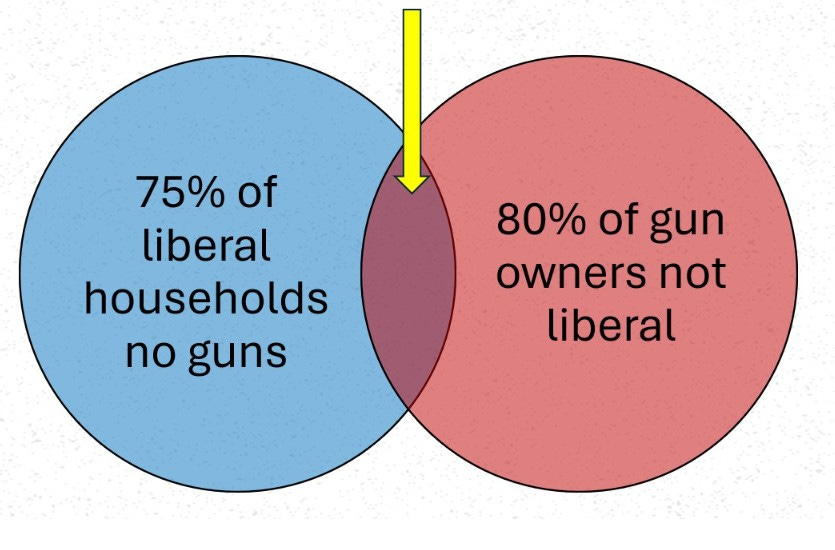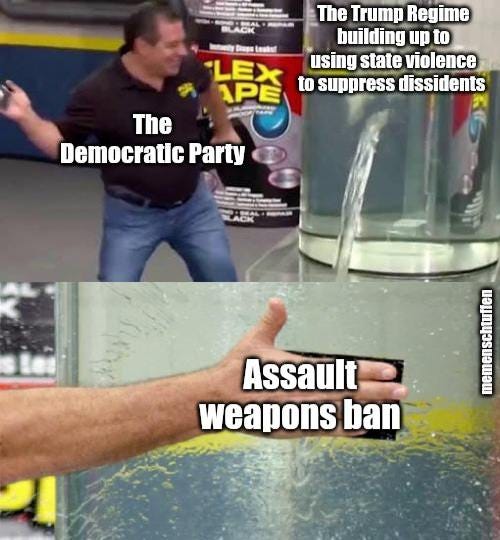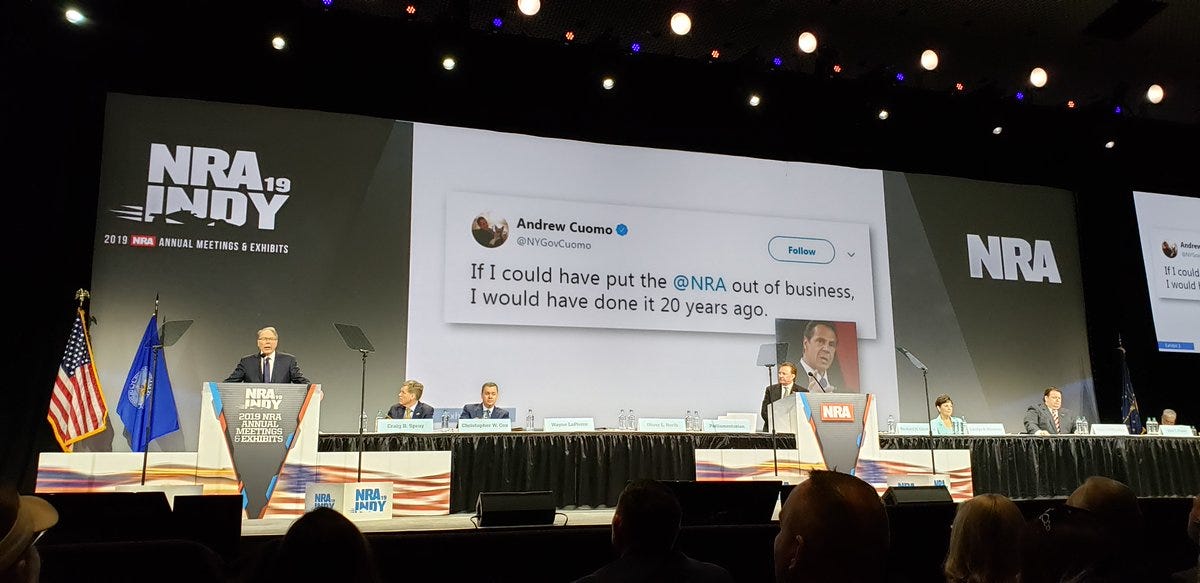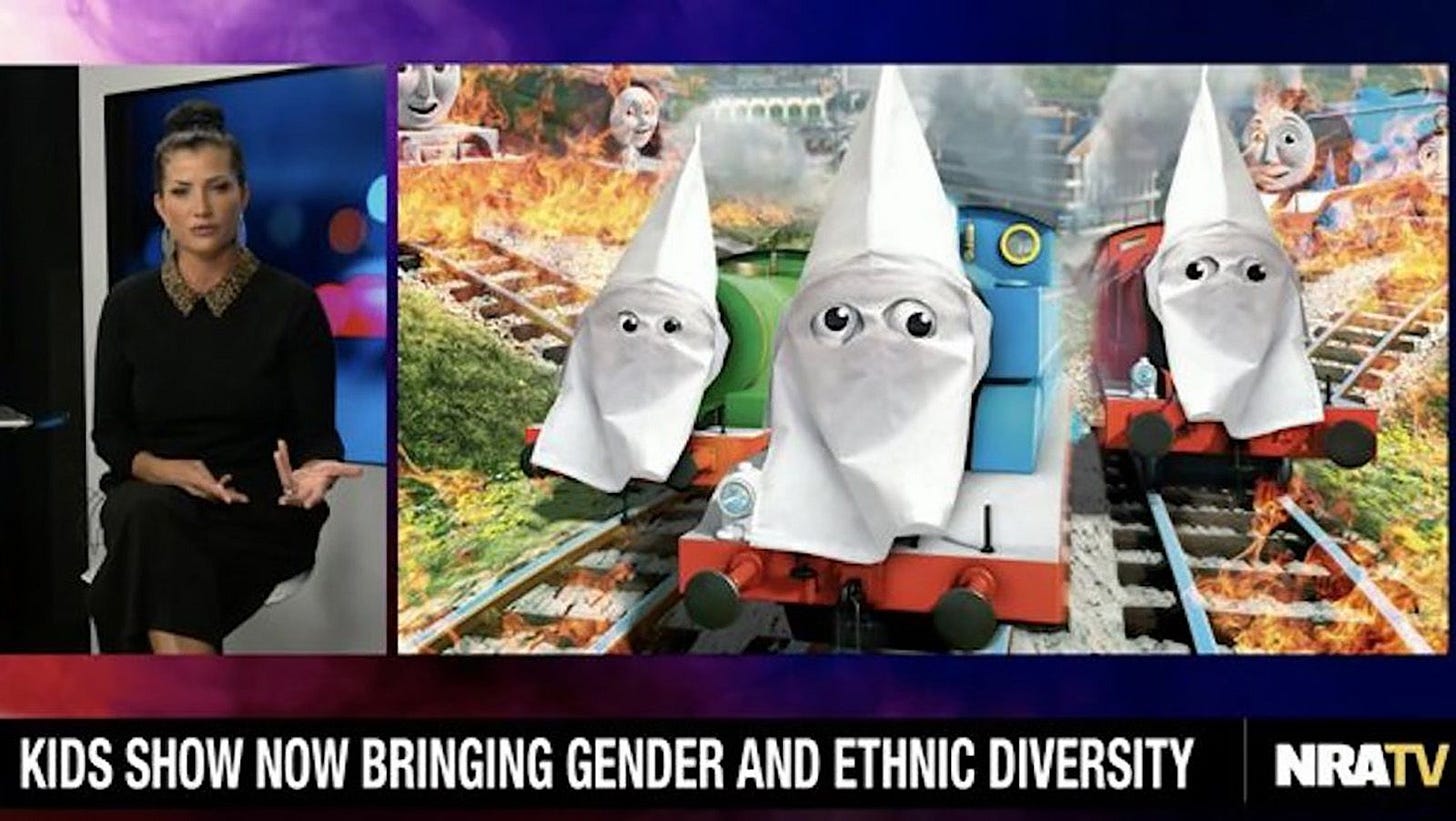“Governor Glenn Youngkin vetoed two dozen gun control bills this year and you’ve got Abigail Spanberger, the Democratic nominee, who has said she’ll sign every one that gets to her desk. It’s not hyperbole to say that if the Democrats win this [governor’s] election in November, this time next year Virginia’s going to be East California, it’s going to be South New Jersey.” — Cam Edwards
I have been a liberal Democrat for a long time, having served as Vice President of the American University College Democrats back in 1987. More recently, I am a member of various gun organizations, including the National Rifle Association (NRA).
Although not singular, this does make me somewhat unique. Most liberals are not gun owners and most gun owners are not liberal.
As I explained in an address to the Liberal Gun Club’s national meeting last fall, living at the intersection of these two worlds can be challenging. It gives me a feeling of cultural and political homelessness, of being “neither here nor there.” Anthropologist Victor Turner used the term liminality to describe this condition of being “betwixt and between” social statuses.
I felt this liminality acutely when I returned from the LGC nationals to find the November 2024 issue of the NRA magazine Shooting Illustrated in my mail stack.
The liberal repulsion I immediately felt seeing the NRA’s endorsement of Donald Trump, Virginia Foxx, and Mark Robinson on the cover of the magazine was paired with the gun-owner attraction I felt seeing a very generous and positive review of my book Gun Curious on the inside.
Although I see myself ideologically as a liberal — it’s in the subtitle of my book Gun Curious, after all — I don’t engage in partisan politics around guns. If anything, I try to build bridges to de-polarize guns politically.
But the sad reality today is that guns are a wedge issue in our polarized two-party political system. The Republican Party has become the party of gun rights and the Democratic Party has become the party of gun regulations.
People I know from my work on guns often ask me some version of the question, How can liberal gun owners vote for Democrats?
My response is that, on the one hand, it is quite easy. Gun rights are just one of many issues that are on the ballot in any election. Sometimes I turn the question around and ask, How can someone who is trans* vote for Republicans? How can someone who supports women’s bodily autonomy vote for Republicans? And so on.
On the other hand, it quite frankly sucks. I hate how the Democratic Party has leaned into gun control as a key issue, including in ways that are funny/sad as expressed in this meme I borrowed from a friend:
I wish I could say that Cam Edwards was engaging in hyperbole in the quote that opens this post. But look at what the Democrat-controlled legislature and national Democratic Party aspirant Governor Jared Polis just did in Colorado. Look at what the Democrat-controlled legislature and national Democratic Party aspirant Governor Gavin Newsom has done in California. And so on.
These are not new developments, of course. As political scientist Matthew Lacombe has persuasively argued in his book, Firepower: How the NRA Turned Gun Owners into a Political Force, the NRA was both highly political and highly ideological prior to the Cincinnati Revolt in 1977. The post-1977 difference is that the NRA became partisan and its political alignment with the GOP grew stronger and stronger.
Both internal and external forces drove this alignment. Internally, the modern gun rights movement was animated by 1960s anti-Communist populist politics. This included members of the John Birch Society, supporters of George Wallace, and — as historian Andrew McKevitt shows in his book, Gun Country: Capitalism, Culture, and Control in Cold War America — local gun rights activists we’ve never even heard of before.
Externally, the NRA’s partisan political alignment was driven by Democrat-led initiatives like the Gun Control Act of 1968, the incorporation of gun control in the national party platform in 1968 (and annually since then), the attempt to include firearms and ammunition under the Consumer Product Safety Commission’s jurisdiction in 1972, the founding of the National Council to Control Handguns (now Brady) in 1974, and so on.
Although nothing is inevitable, these political realities help us to understand why the National Rifle Association (NRA) has long aligned itself with the Republican Party. What choice do Democrats give them?
The reinvigoration of the contemporary gun control movement, fueled by horrific mass shootings and Michael Bloomberg’s money, helped push the NRA ever rightward. According to Tim Mak’s Misfire: Inside the Downfall of the NRA, by 2016 “its metamorphosis from a gun organization into a conservative culture-war organization” was complete. In that year’s presidential election, according to Mak, “the NRA morphed from a Second Amendment organization into a Trump organization.”
Under Wayne LaPierre and Ackerman McQueen, Trump-NRA messaging broadened to include every conceivable conservative culture war issue.
As seen on NRATV.

This era also marked the beginning of the end of the post-1977 National Rifle Association (NRA 1.0).
As the organization seeks to reform itself from the self-inflicted wounds of the Wayne LaPierre/Ackerman McQueen era, NRA 2.0 has the opportunity to be a gun rights organization without being a conservative culture warrior organization.
Even as it necessarily aligns with the Republican Party, an inclusive NRA does not have to go beyond that and buy into the MAGA movement that has seized the GOP.
I am certainly not optimistic at this point that NRA 2.0 will opt for the path of gun culture diversity and inclusion over MAGA’s homogeneity and exclusion. The recently elected “reform” NRA President, Bill Bachenberg, fancies himself a “change agent,” but he has also served on the NRA Board of Directors through the troubles. Since 2003, in fact.
Moreover, he told Cam Edwards at the NRA annual meeting:
"We elected President Trump three times as president and we're going to elect him a fourth time. So we need to all work together ... that's something that I'm working on."
A surprising statement, on the one hand. On the other hand, Bill Bachenberg is an election denier who chaired a group of unauthorized “alternate” electors for Donald Trump in 2020.
NRA 2.0? It’s like déjà vu all over again.
What vision does Bill Bachenberg have for the NRA? Is his idea of "10 by 30" -- 10 million NRA members by 2030 -- going to be adding 7 million MAGA NRA members?
Beyond Bachenberg, what vision do other NRA 2.0 “reform” members of the NRA Board of Directors have for the NRA?
I can’t say I’m optimistic. What about you?










I'm sure some democrat political strategist has realized that gun policy is an overall losing tack for Democrats, yet none have ever acted on it. Democrats using guns as a wedge issue has been a loser again and again. Those who would cheer at further restrictions were already voting straight ticket anyway. Very few democrat politicians are even allowed to be pro-gun, as that threatens the ideological purity of the party (or at least that's how it feels) despite it not being a pushbutton issue for many reliable democrat voters.
I have said before and will maintain that if Democrats simply remove gun restrictions and bans from their official party platform, and discourage members from pushing aggressive legislation, a neutral stance should be adequate, they would win enough votes from moderate gun owners and eliminate enough single issue counter-votes that they could be political dominant for the foreseeable future. (At least until the Republicans re-align a bit more to the center, which could be a while)
Sometimes the only bus going anywhere near where you want to go is not a very nice bus, but all the others are worse, or broken.